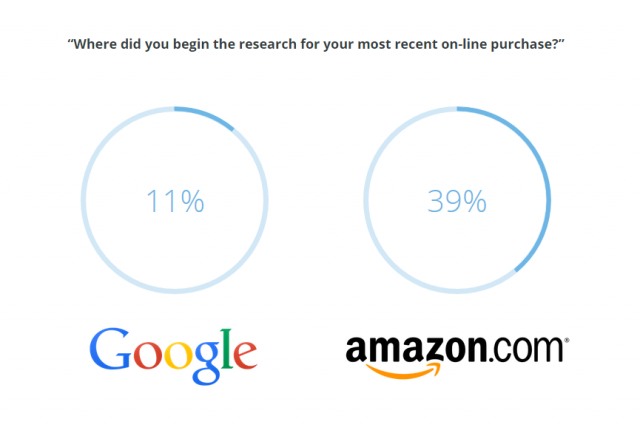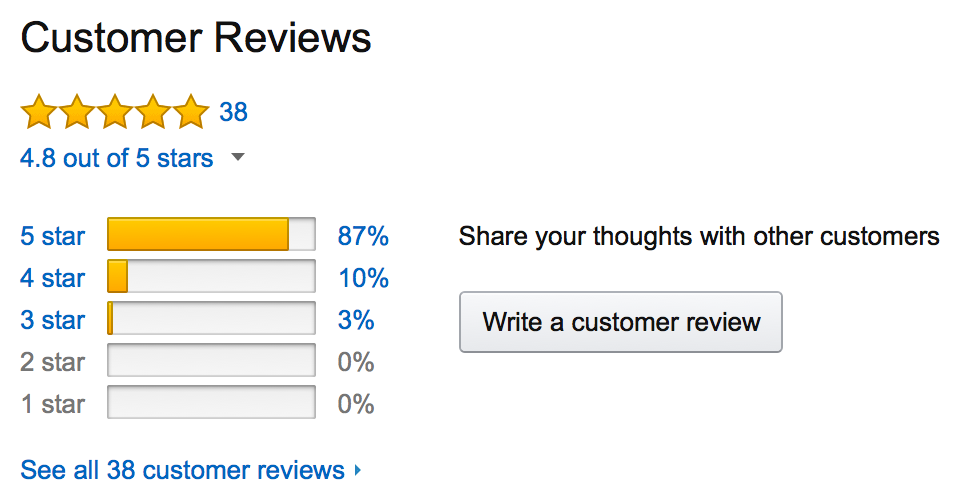Amazon SEO Australia
SEO for Amazon Searches?
A simple misconception with the launch of Amazon into Australia is that all you have to do is get your product feed up-to-date, pay the fee, and then your products will fly off the shelves. While you will likely see some level of success by doing this, what’s often overlooked is that Amazon is really just another search engine. But where a search engine like Google normally indexes external websites and then serves the most relevant ones to users making a search, Amazon builds a huge database of products on its own website and serves those.
Amazon is just the big new search engine on the block, and to get visibility we optimise product listings instead of web pages
At the time of this article, Amazon is only just launching in Australia, so our understanding of how the Australian website differs from other regions is limited. However, Amazon’s A9 search algorithm runs the SERPs on all of Amazon’s regional websites – so it’s expected that there will be strong similarities with other markets.
What is the Opportunity?
In the UK, a survey of 2,000 people found that around twice as many product searches begin on Amazon compared to search engines. For online retailers, this is far too big to ignore. It’s no wonder that the biggest retailers in Australia are already adopting a “if you can’t beat them, join them” attitude to the launch of Amazon in the country.

Another statistic out of the US on where most people start with product searches.
How to Optimise for Amazon Searches
SEOs reacting to Amazon’s launch in Australia are divided. Some are threatened by the searchers that will be taken from Google, but others are excited for the opportunity this new search engine brings to the table (and rightly so). Over the years, Google’s algorithm has become so intelligent, and competition has become so fierce that you can expect it to take years to start ranking for high volume product search terms. Amazon offers both a clean slate where there are no dominant existing competitors to muscle out of the top positions, and also a simpler algorithm. The benefit of a simpler algorithm is that SEOs can find out what Amazon finds most favourable in a product listing and do everything possible to match those criteria. Below, we have compiled a list of the criteria that has found to be successful in optimising for Amazon in other regions, and we will be using this as a starting point for optimising for Amazon in Australia.
Amazon Search Ranking Factors
Conversion Rate
This is one of our favourite ranking factors — one that unfortunately isn’t available on other search engines. The ultimate test of whether a product is relevant to a search is whether someone purchased it. This means that ranking in Amazon isn’t just an exercise in SEO, but also CRO.
There are a number of things that effect Amazon conversion rates including:
- Price – if users can find it cheaper elsewhere for a comparable product, they’re likely to buy elsewhere.
- Relevance – was the product what the user expected when they clicked the listing?
- Persuasive Writing – Writing in a way that handles potential objections and ticks all the boxes for customers.
- Reviews – The “I’ll have what she’s having” effect, that proves to users that this is the right decision for them, because it was the right decision for others.
- Category-specific – There will be a range of other factors that help your conversion rate, and many of these will be category-specific. The key is to test and measure over and over to find what works for you.
Images
As with all search engines, quality content is a positive signal. It’s true that a picture says a thousand words, especially for eCommerce. Quality, quantity, and variety of images is one of the best things you can do to appeal to Amazon’s ranking algorithm and to users as well!
Reviews
This is a harder one for SEOs to impact, this more comes down to business processes and products. Getting good reviews primarily happens for 2 reasons:
- You have asked your customers to review you.
- You offered a great product and service at a reasonable price.

Sales Figures
The next factor that is said to impact rankings is sales figures. It’s been shown on the US version of Amazon that this is a cause effect relationship. But the best way to help this is to make sure that your listings are well-optimised and are converting well.
Sales Rank
Amazon loves to rank sellers of products. By becoming the #1 seller of widgets in Australia, you’re likely to see success in the widgets category!
Price
Price helps click-through-rate and conversion rate, by making your offering more attractive to users than your competitors. In-turn this will help your rankings in A9.
Titles
Titles are a big one for 2 main reasons. Firstly, product titles must contain keywords that match what people are searching for to be considered relevant to certain searches. And secondly, titles are a great chance to get your click-through-rate up. Titles that have a good match with searches and that are compelling for users to click will achieve a higher click-through-rate.
Bullet Points and Descriptions
As with most search engines, content displayed in dot-points is considered easier to digest for users and is therefore favoured. A9 is no different, so add your features, benefits, and tech specs in dot-points to appeal to the algorithm.
Descriptions are also a great opportunity to include a range and variety of keywords that you want your products to rank for. Make them clear and descriptive without rambling as this is what users will be reading to decide whether or not to buy from you.
Keyword Density
Modern search engines like Google will punish websites that try to game the system by stuffing keywords into content, titles, and tags. Amazon is no different and has experienced its own set of Panda updates in the past which have penalised stores that inject tonnes of keywords into the copy.

How to Choose Keywords
Just like with Google you can use Google Adwords Keyword Planner or any number of external tools to find what people are searching for — you can use external tools to find what terms people are using to search on Amazon. Without this crucial step, it’s like having a sail boat and a windy day, but not having any idea which way to point the sails. Choose keywords that closely match your products, but that also have high search volumes. You can also find opportunity on keywords that have lower competition than others because you’ll have a much higher chance of outranking competitors.
The Verdict
The often-overlooked component of optimising on Amazon is that product listings don’t just have a chance to rank in the Amazon algorithm, but also in other search engines too! How many times have you searched for a product in Google and the number 1 result is an Amazon listing? It’s pretty common and needs to be considered when optimising products. Make your products appeal to Amazon’s A9 algorithm, Google, and Bing and there will be a lot of opportunity for your business.
As an agency who specialise in both SEO and CRO, we are well-equipped to help you on your journey into the Amazon Marketplace. Give us a call to find out how we can assist you with all of the above and much more.